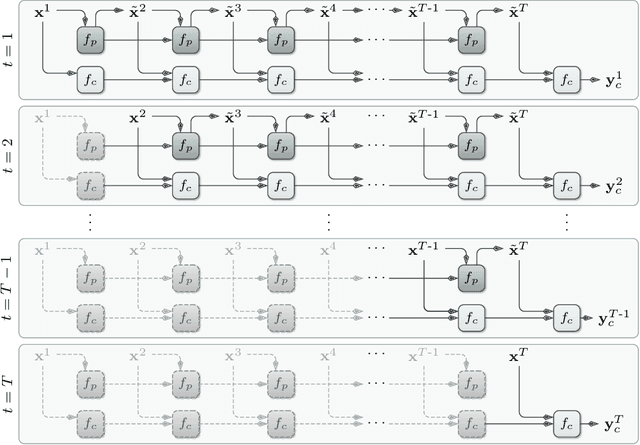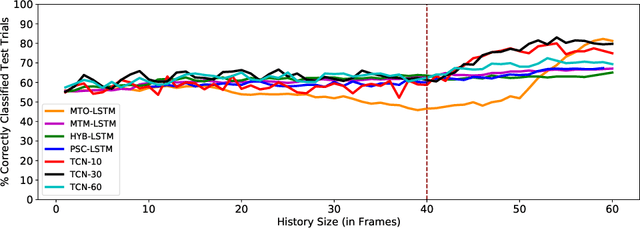Winfried Ilg
Generating Realistic Arm Movements in Reinforcement Learning: A Quantitative Comparison of Reward Terms and Task Requirements
Feb 21, 2024



Abstract:The mimicking of human-like arm movement characteristics involves the consideration of three factors during control policy synthesis: (a) chosen task requirements, (b) inclusion of noise during movement execution and (c) chosen optimality principles. Previous studies showed that when considering these factors (a-c) individually, it is possible to synthesize arm movements that either kinematically match the experimental data or reproduce the stereotypical triphasic muscle activation pattern. However, to date no quantitative comparison has been made on how realistic the arm movement generated by each factor is; as well as whether a partial or total combination of all factors results in arm movements with human-like kinematic characteristics and a triphasic muscle pattern. To investigate this, we used reinforcement learning to learn a control policy for a musculoskeletal arm model, aiming to discern which combination of factors (a-c) results in realistic arm movements according to four frequently reported stereotypical characteristics. Our findings indicate that incorporating velocity and acceleration requirements into the reaching task, employing reward terms that encourage minimization of mechanical work, hand jerk, and control effort, along with the inclusion of noise during movement, leads to the emergence of realistic human arm movements in reinforcement learning. We expect that the gained insights will help in the future to better predict desired arm movements and corrective forces in wearable assistive devices.
Generating Sparse Counterfactual Explanations For Multivariate Time Series
Jun 02, 2022



Abstract:Since neural networks play an increasingly important role in critical sectors, explaining network predictions has become a key research topic. Counterfactual explanations can help to understand why classifier models decide for particular class assignments and, moreover, how the respective input samples would have to be modified such that the class prediction changes. Previous approaches mainly focus on image and tabular data. In this work we propose SPARCE, a generative adversarial network (GAN) architecture that generates SPARse Counterfactual Explanations for multivariate time series. Our approach provides a custom sparsity layer and regularizes the counterfactual loss function in terms of similarity, sparsity, and smoothness of trajectories. We evaluate our approach on real-world human motion datasets as well as a synthetic time series interpretability benchmark. Although we make significantly sparser modifications than other approaches, we achieve comparable or better performance on all metrics. Moreover, we demonstrate that our approach predominantly modifies salient time steps and features, leaving non-salient inputs untouched.
Early Recognition of Ball Catching Success in Clinical Trials with RNN-Based Predictive Classification
Jul 06, 2021



Abstract:Motor disturbances can affect the interaction with dynamic objects, such as catching a ball. A classification of clinical catching trials might give insight into the existence of pathological alterations in the relation of arm and ball movements. Accurate, but also early decisions are required to classify a catching attempt before the catcher's first ball contact. To obtain clinically valuable results, a significant decision confidence of at least 75% is required. Hence, three competing objectives have to be optimized at the same time: accuracy, earliness and decision-making confidence. Here we propose a coupled classification and prediction approach for early time series classification: a predictive, generative recurrent neural network (RNN) forecasts the next data points of ball trajectories based on already available observations; a discriminative RNN continuously generates classification guesses based on the available data points and the unrolled sequence predictions. We compare our approach, which we refer to as predictive sequential classification (PSC), to state-of-the-art sequence learners, including various RNN and temporal convolutional network (TCN) architectures. On this hard real-world task we can consistently demonstrate the superiority of PSC over all other models in terms of accuracy and confidence with respect to earliness of recognition. Specifically, PSC is able to confidently classify the success of catching trials as early as 123 milliseconds before the first ball contact. We conclude that PSC is a promising approach for early time series classification, when accurate and confident decisions are required.
 Add to Chrome
Add to Chrome Add to Firefox
Add to Firefox Add to Edge
Add to Edge